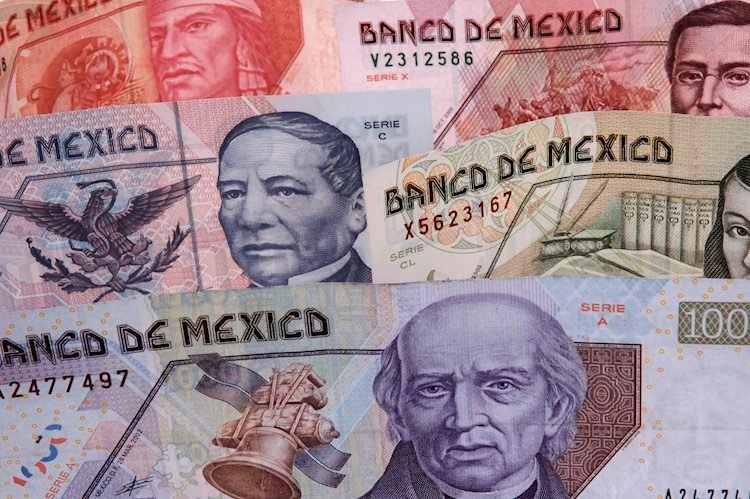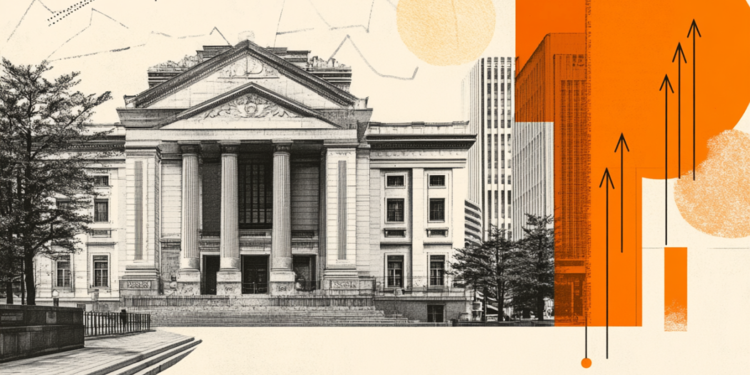- Mexican Peso rally pauses, influenced by mixed inflation data and Banxico rate cut.
- Core CPI deceleration backs Banxico move, yet annual inflation worries linger.
- USD/MXN’s next moves are eyed with upcoming US inflation data focusing traders on 16.00, 17.00 levels.
The Mexican Peso loses steam against the US Dollar on Tuesday after refreshing almost nine-year highs of 16.26. Mexico’s inflation data was mixed, though the emerging market currency tumbled more than 0.5%, as price action seems overextended. The USD/MXN trades at 16.40.
Mexico’s Consumer Price Index (CPI) was lower than estimated as the disinflation process continued. In the same tone, core CPI on a yearly and monthly basis decelerated, justifying the Bank of Mexico’s (Banxico) decision to lower rates on March 21. However, not everything was good news for the central bank as the yearly CPI exceeded estimates.
Maria Marco, an analyst at Monex Europe, said, “Given that at the March meeting the entire Board of Governors devoted much of their efforts to stressing that the balance of risks to inflation remains skewed to the upside, today’s data confirms our view that Banxico didn’t embark on an uninterrupted sequence of rate cuts last month.”
That said, USD/MXN traders’ focus shifts toward the next inflation report in the United States (US). Softer data could drive the USD/MXN toward the 16.00 psychological barrier. Otherwise, the pair could surpass the 16.50 figure with buyers eyeing 17.00.
Daily digest market movers: Mexican Peso slips post inflation report
- Mexico’s CPI rose 0.29% MoM, according to the National Statistics Agency (INEGI). This was lower than the expected 0.36% increase and higher than the 0.09% rise noted in February.
- Core inflation registered a rise of 0.44%, which was lower than the 0.51% that economists had forecast and below the 0.49% increase in February.
- US Treasury bond yields plunged sharply, with the 10-year benchmark coupon down six basis points to 4.362%. Consequently, the US Dollar Index (DXY) remains virtually unchanged with the DXY standing at 104.14, up by a minimal 0.02%.
- Market participants’ expectations that the Fed would cut rates three times this year remain volatile, according to the CME FedWatch Tool. The odds for June edged from 52% to 57.7%, while for July, they stood at 74%.
Technical analysis: Mexican Peso loses momentum as USD/MXN jumps from 2015 lows

The USD/MXN fell to a new nine-year low at around 16.25, with traders posing to drive the exchange rate below that level toward the 16.00 figure. Even though the Relative Strength Index (RSI) turned oversold, sellers are gaining momentum. Therefore, the next support would be the psychological 16.00 figure.
Nevertheless, the pair made a U-turn, with the USD/MXN about to form a “bullish engulfing” chart pattern that could drive the exchange rate higher. The first resistance would be the psychological 16.50 mark, followed by last year’s 16.62 mark. Once those two levels are cleared, buyers will target 17.00.
Banxico FAQs
The Bank of Mexico, also known as Banxico, is the country’s central bank. Its mission is to preserve the value of Mexico’s currency, the Mexican Peso (MXN), and to set the monetary policy. To this end, its main objective is to maintain low and stable inflation within target levels – at or close to its target of 3%, the midpoint in a tolerance band of between 2% and 4%.
The main tool of the Banxico to guide monetary policy is by setting interest rates. When inflation is above target, the bank will attempt to tame it by raising rates, making it more expensive for households and businesses to borrow money and thus cooling the economy. Higher interest rates are generally positive for the Mexican Peso (MXN) as they lead to higher yields, making the country a more attractive place for investors. On the contrary, lower interest rates tend to weaken MXN. The rate differential with the USD, or how the Banxico is expected to set interest rates compared with the US Federal Reserve (Fed), is a key factor.
Banxico meets eight times a year, and its monetary policy is greatly influenced by decisions of the US Federal Reserve (Fed). Therefore, the central bank’s decision-making committee usually gathers a week after the Fed. In doing so, Banxico reacts and sometimes anticipates monetary policy measures set by the Federal Reserve. For example, after the Covid-19 pandemic, before the Fed raised rates, Banxico did it first in an attempt to diminish the chances of a substantial depreciation of the Mexican Peso (MXN) and to prevent capital outflows that could destabilize the country.

























